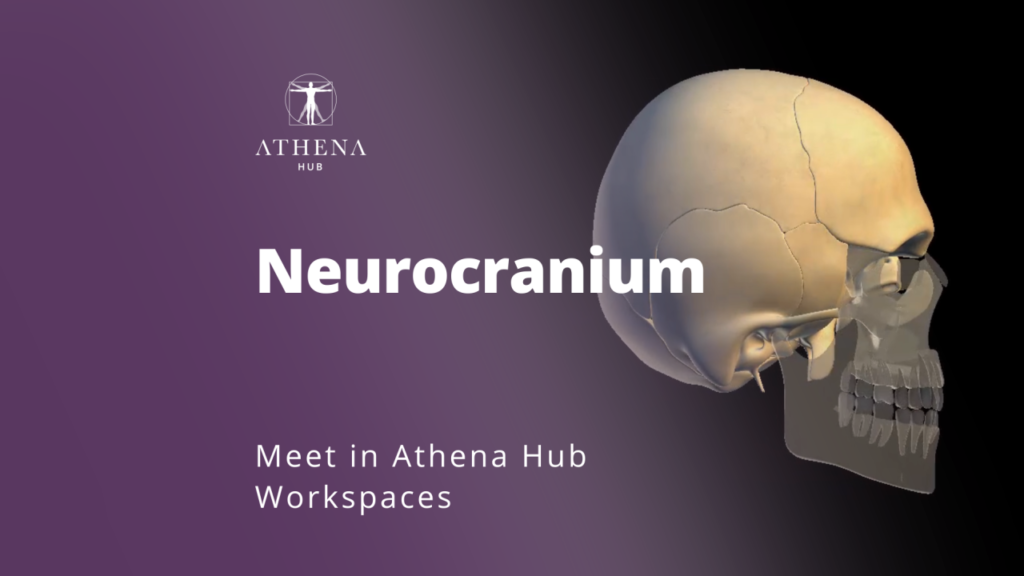Blog Medical Harbour
Articles focused on letting you know the latest news surrounding new technologies allied to productivity and quality of life - SubscribeDiscover Athena Hub!
Discover Athena Hub! An interactive teaching platform to study anatomy, 3D virtual dissection, and medical image analysis. Here, students find several modules to navigate and explore the human body in a simple and intuitive way, such as: Human Cadaver, Anatomy Atlas, Radiology, Cytology, and Scan Slides.
Viscerocranium – Athena Hub Workspaces
The viscerocranium (or splanchnocranium) is the fixed skeleton of the face and jaw. It is located in the anterior part of the skull and makes up the bones of the mouth (maxilla and mandible), nose and orbital cavities. Also learn about the Skull and Neurocranium!...
Neurocranium – Athena Hub Workspaces
The neurocranium (or neural skull) has the brain portion of the CNS. It is divided into two parts: the first is called the skull cap and the second is called the skull base. Also learn about the Skull and Viscerocranium! The skull cap is an ovoid portion formed by...
Skull – Athena Hub Workspaces
The skull it's a structure made up of flat and irregular bones that serve as protection for the brain. It can be divided into two parts: an inferior part, called the splanchnocranium (or visceral skull), which supports the facial viscera and, an superior part, the...
Adult Human Skeleton – Athena Hub Workspaces
The adult human skeleton is formed by 206 bones, which serve to protect our organs, support the body, reserve mineral salts (such as calcium) and produce blood cells (in the bone marrow). We can divide it into axial skeleton (skull, vertebrae, ribs and sternum) and...
Appendicular Skeleton – Athena Hub Workspaces
The appendicular skeleton has all the bones referring to the upper and lower limbs, shoulder and pelvis! In other words, it's the extremities! Also learn about the axial skeleton and adult human skeleton! The main function it’s to support our body and make our...
Axial Skeleton – Athena Hub Workspaces
Our skeleton can be divided into two large portions: the axial and appendicular skeleton. Within them, we can find all our bones! Also learn about the adult human skeleton and appendicular skeleton! The axial skeleton has all the bones that lie on our central axis,...
Lymphoid Organs – Athena Hub Workspaces
The spleen, thymus and tonsils are considered lymphoid organs. Despite not having a direct association with lymphatic circulation, they are part of the body's immune system. Lymphocyte production is the main function of lymphoid organs.
Large Intestine – Athena Hub Workspaces
The large intestine is part of the digestive system, and it is where the last stage of the digestive process takes place, the absorption of water, which is its main function, and the formation of fecal mass.
This organ is divided into four parts: The cecum, which serves as a link between the small intestine and the colon; The colon is the most extensive part of the large intestine; The rectum, which stores feces until they are eliminated from the body; And the anus, which is the connection between the large intestine and the external environment.
Small Intestine – Athena Hub Workspaces
The small intestine is an organ present in the digestive system. It is about six meters long, and is where most nutrients and water are absorbed. It is also there that food undergoes the action of substances produced by the pancreas and liver.
It is divided into: Duodenum, which is the region where substances produced by the pancreas, such as pancreatic juice and bile, are released; And jejunum and ileum, which are responsible for the final stages of digestion.
Respiratory System – Athena Hub Workspaces
The respiratory system can be called a set of organs responsible for breathing, speech and odor perception. These organs transport air into the lungs and then expel it to the outside.
But its main function is breathing, which occurs innately in people from birth. It allows you to transport oxygen to all body cells and eliminate carbon dioxide, and it occurs in two ways: The nspiration and exhalation.











